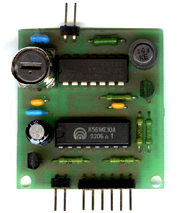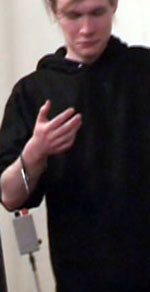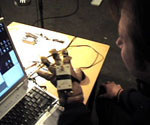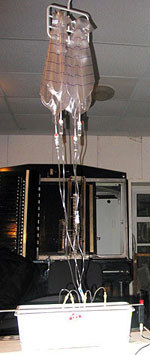contact
MOMus
Museum of Modern Art
Costakis Collection
21 st Kolokotroni Str.
Moni Lazariston
56430, Stavroupoli
Greece
Theremin Sensors Workshop |
| = 5 days with final concert-presentation of results = |
The workshop is oriented on sound and media artists, composers and musicians, who have particular interest in sound art and interactive systems, unknown history and musical technology in general. The theoretical introductions, which accompany a workshop, give detailed technical overview of sensor technology and construction, art and music applications, forgotten, but very useful concepts and ideas, condensed historical content, mostly related to almost forgotten historical facts. During the workshop participants will develop and realize their ideas regarding different sorts of pickups, antennas and conductive medias (metal objects, foil, water, human body, plants, metal threads, thin plastic films with metallization, all sorts of Christmas stuff etc.) which could be useful to produce different interactive audio/video installations, motion capturing systems and unusual musical instruments.
Requirements Software Minimal configuration Analog and digital USB sensors for testing, experimenting and performance as well as all appropriate software libraries will be provided by instructor as well as different stuff for antenna construction. |
========================================= =Schedule=
Day#2 Day#3 Day#4 Last day ========================================== |
|
Learn More:
Extra Links:
|
 This intensive workshop offers hands-on introduction to interactive systems, based on the sensor technology, developed by Andrei Smirnov for measuring and monitoring human motion, variations in electrical and mechanical features of different objects, air and water flows etc.
This intensive workshop offers hands-on introduction to interactive systems, based on the sensor technology, developed by Andrei Smirnov for measuring and monitoring human motion, variations in electrical and mechanical features of different objects, air and water flows etc. 
 Each participant should have a computer with an audio input and headphones.
It could be useful to have as many mic stands as participants. All computers and software should be configured and checked in advance (!).
Each participant should have a computer with an audio input and headphones.
It could be useful to have as many mic stands as participants. All computers and software should be configured and checked in advance (!).  Day#1
Day#1 Multichannel t-sensor systems: development and programming.
Multichannel t-sensor systems: development and programming.